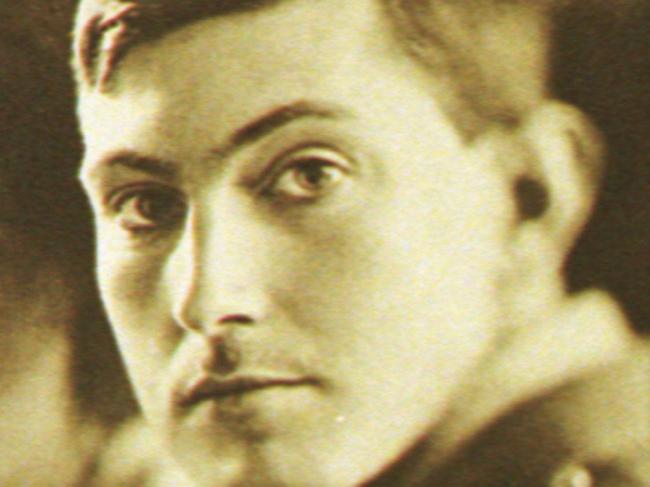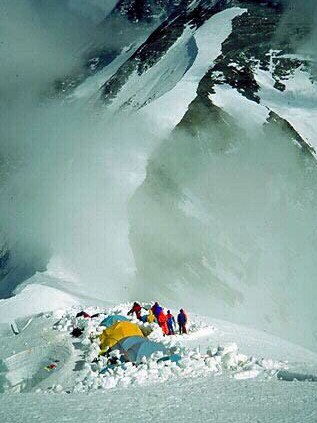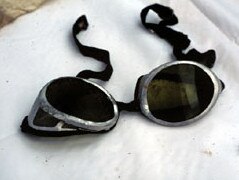George Mallory paid ultimate price for challenging Everest
When a member of a research team on Everest broke away to search on his own, he solved a 75-year mystery by finding the body of mountaineer George Mallory
The research team on Everest in 1999 had one specific quest, to find the body of a long lost mountaineer. Not just any mountaineer, but one of the most famous climbers of the 20th century, Englishman George Mallory.
He was the man who, when asked why he wanted to climb the mighty peak, answered: “Because it’s there.” Mallory took part in three expeditions to the mountain in 1921, 1922 and 1924, disappearing on the third.
Over the ensuing years his fate remained a mystery. Despite occasional sightings of a body on the mountain and climbers on several expeditions trying to find Mallory’s remains, nothing had been confirmed. But in 1999 a more thorough search was launched, sponsored by National Geographic and the BBC.
On May 1, 1999, 20 years ago today, an American expedition member, Conrad Anker, struck out on his own and saw a patch of matt white that was not snow. He said it was a “light absorbing colour, like marble.” As he got closer he realised it was a body, dressed in clothes matching the description of Mallory. The discovery solved part of the mystery of Mallory, but still left questions unanswered.

Mallory was born in 1886 in Mobberley, Cheshire in England. The son of a clergyman, at 13 he won a scholarship to study at Winchester College. It was there a teacher, Robert Irving, introduced him to climbing, taking him on an excursion to the alps.
In 1905 Mallory went to study history at Cambridge. After his graduation he went to France to climb mountains, but in 1910 settled down to become a schoolteacher
at the renowned English school Charterhouse.
Invited to a dinner in 1913, Mallory met Ruth Turner, daughter of well known architect Hugh Turner. Hugh invited Mallory to spend time with his family on a trip to Venice and Mallory fell in love with Ruth. They were married in 1914, shortly before the outbreak of war. Although opposed to war, Mallory, after several of his students died, felt compelled to do his duty, joining the army in 1915 and serving in France.
Released from service in 1919 he returned to teaching but revived a mountain climbing group he had been in before the war. In 1921 the Royal Geographical society recruited Mallory to be part of a reconnaissance mission led by Lieutenant-Colonel Charles Howard-Bury, to gather information about how best to climb Mount Everest.
But the team was woefully underequipped. They carried no bottled oxygen and dressed in tweed jackets over woollen jumpers, their boots had nails projecting from the soles. They left Darjeeling in May 1921.

Hot and dusty during the day with temperatures plunging to freezing at night, the climbers also found the terrain tougher than expected and were soon exhausted. The expedition’s senior doctor, Alexander Kellas, died of heart failure and there was tension between Howard-Bury and Mallory.
They explored the Rongbuk glaciers on the approach to the north face and became convinced this was the best route, but fatigue and storms stopped them at 7010m.
In 1922, Mallory joined another expedition under General Charles Bruce, which included Australian George Finch. This attempt encountered problems but this time several climbers made it to 8170m, about 700m from the peak, before winds, bitter cold and frostbite forced them to turn back.
They made one more attempt, reaching 8320m, but abandoned the idea of a third and were heading back down when Mallory heard a noise “not unlike an explosion of untamped gunpowder” — an avalanche. It killed seven Sherpas and convinced the team to give up.
Mallory accepted some blame for the deaths and only reluctantly took part in the 1924 expedition.

It was hit by bad luck even before it got under way with Bruce struck down by malaria, leaving Major Edward Norton took over. Bad weather and accidents dogged the climbers, but the weather improved and two unsuccessful attempts were made on the summit; the first by Mallory and Geoffrey Bruce, on June 1, the second by Norton and Dr Howard Somervell on June 4.
Mallory and Andrew Irvine tried again on June 8. Noel Odell, the last person to see them alive, watched them make the final attempt on the summit before seeing them disappear as clouds rolled over the mountain. Their fate was unknown for nearly 75 years.
Even when Mallory’s body was found on the mountain in 1999 there was no evidence to suggest whether he had died on his way up to the summit, or on his descent from it.



